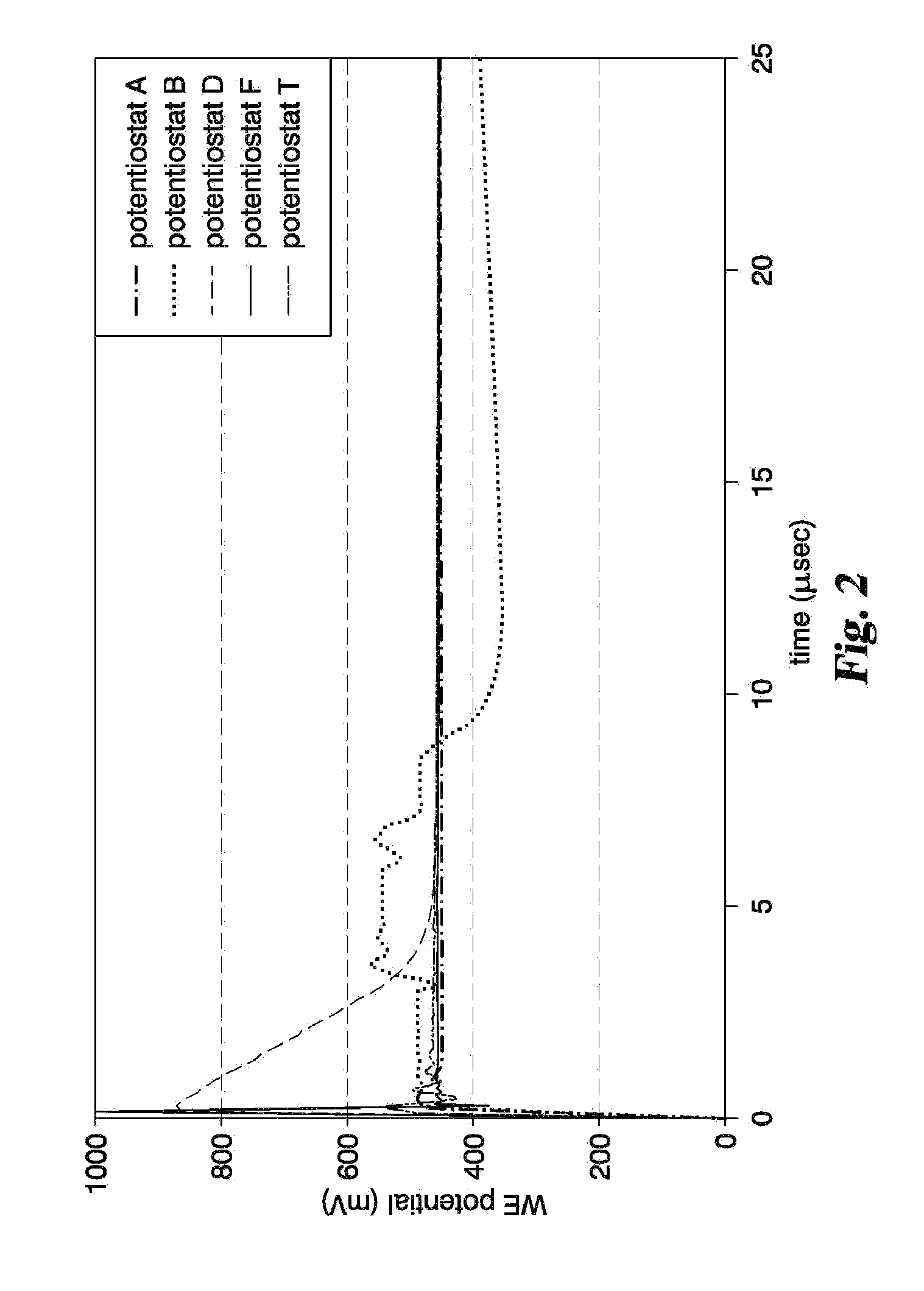Controlled slew rate transition for electrochemical analysis
a technology of electrochemical analysis and slew rate, applied in the field of engineering and electrochemistry, can solve the problems of undesirable effects in amplifiers, inability to measure accurately, and limitations in the slew rate capability of meter systems, and achieve the effects of sufficiently fast potential transition, inability to measure accurately, and inability to control the slew ra
- Summary
- Abstract
- Description
- Claims
- Application Information
AI Technical Summary
Benefits of technology
Problems solved by technology
Method used
Image
Examples
examples
[0053]The invention will be more fully understood upon consideration of the following non-limiting examples, which are offered for purposes of illustration, not limitation.
[0054]Turning now to FIG. 9, it shows a graph of the current response to the ramped-shaped, sinusoidal-shaped and exponential-shaped 550 mV excitation potentials with the 200 μsec transition time for a glucose linearity solution with a glucose concentration of about 400 mg / dl (LIN 4). Compared to the current response of the step excitation potential also illustrated in the graph of FIG. 9, the ramped-shaped, sinusoidal-shaped, and exponential-shaped excitation potentials (i.e., the ones with the controlled transition time) have a significantly lower peak current response, with the ramped-shaped excitation potential having the smallest peak current. This reduction of the peak current response continues as the transition time becomes longer. As shown in FIGS. 10 and 11, the peak current response becomes even lower w...
PUM
| Property | Measurement | Unit |
|---|---|---|
| resistance | aaaaa | aaaaa |
| resistance | aaaaa | aaaaa |
| transition time | aaaaa | aaaaa |
Abstract
Description
Claims
Application Information
 Login to View More
Login to View More - R&D
- Intellectual Property
- Life Sciences
- Materials
- Tech Scout
- Unparalleled Data Quality
- Higher Quality Content
- 60% Fewer Hallucinations
Browse by: Latest US Patents, China's latest patents, Technical Efficacy Thesaurus, Application Domain, Technology Topic, Popular Technical Reports.
© 2025 PatSnap. All rights reserved.Legal|Privacy policy|Modern Slavery Act Transparency Statement|Sitemap|About US| Contact US: help@patsnap.com



